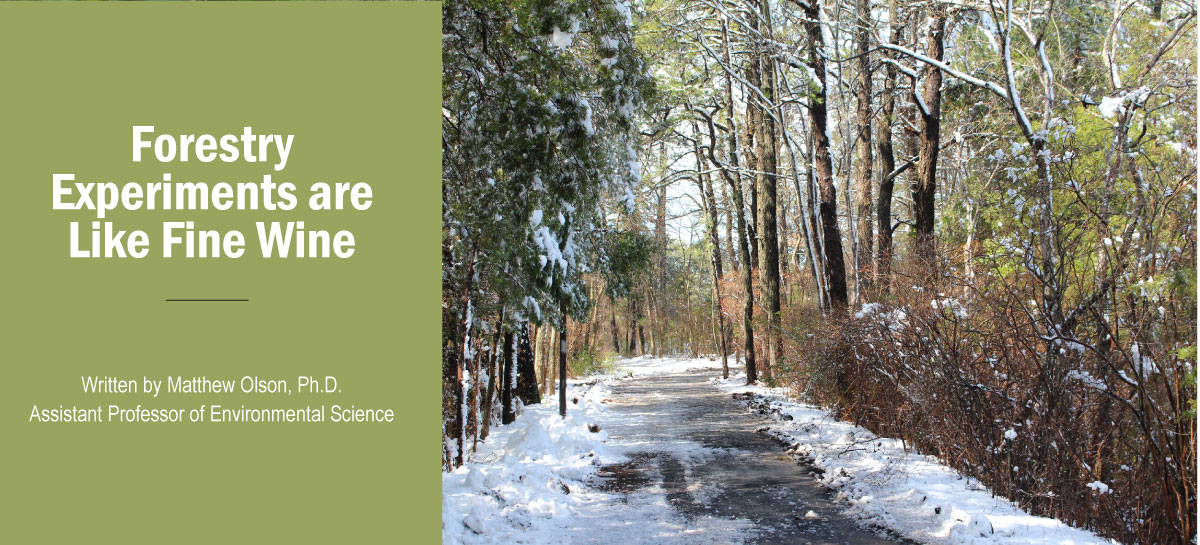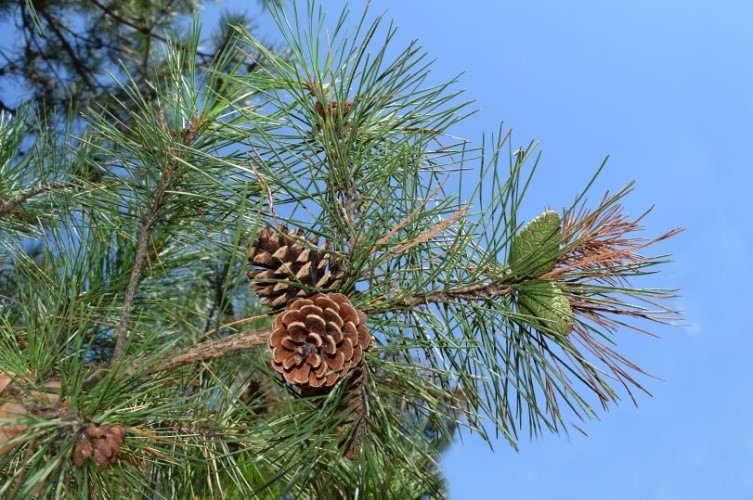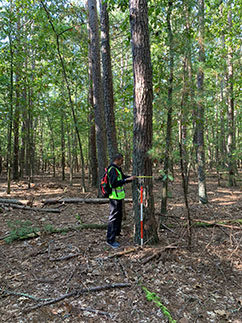Fall 2021 Issue

Forest on Stockton's Galloway campus. Photo credit: Stockton University.
Forest scientists are accustomed to playing the long game when it comes to studying forests and woodlands. This is mainly because trees are long-lived organisms, and the dynamics of tree communities play out over decades to centuries. Forestry experiments are essential to understanding human land-use impacts on forests, especially those that deliberately manipulate one or more factors (i.e., manipulative experiment).
Manipulative forestry experiments often improve with age since they allow scientists to answer questions addressing longer-term consequences of forestry practices. More recently, forest scientists have been leveraging these old studies to help inform discussions of management strategies for enhancing the resilience of forests to climate change and other health threats.
Before leaving my previous post in Arkansas, I learned of an older experimental planting
of shortleaf pine (Pinus echinata) in Burlington County, N.J. The test site was established
in 1958 as part of a larger experiment spanning much of the 23-state natural range
of shortleaf pine. At each test site, shortleaf pine seedlings sourced from different
areas of the species’ range were planted together under similar conditions in what
scientists call a common garden experiment. This experiment was designed to answer
questions about the effects of geographic origin and local adaptation of shortleaf
pine populations to parasites, climate and extreme weather. The New Jersey site includes
shortleaf pine sourced locally from Burlington County to as far west as Missouri and
as far south as Louisiana (seven different source locations in total).
Since the native range of shortleaf pine extends as far north as southern New York, the New Jersey common garden provides an opportunity to research long-term growth of geographically dispersed shortleaf pine sources at the northern edge of the species’ range.
Grant Gallagher, a Stockton undergrad in the Environmental Science/Studies program, and I began reopening this experiment in Summer 2020 as part of Gallagher’s independent studies project. He even delivered a presentation on his research at a regional forest science conference held in March 2021.
A main finding of his research is that the New Jersey seed source, a clear winner in terms of performance early in the experiment, is no longer the top performer. The 2020 data revealed that Virginia, South Carolina and Tennessee sources have closed the performance gap since the last assessment in 1967. Shortleaf pine is anticipated to do well under future climate in many parts of its range. In the Mid-Atlantic region, shortleaf has been identified as a species to regenerate for adapting managed forests to climate change. Our results suggest that forest managers interested in regenerating shortleaf pine artificially in New Jersey may want to source their seedlings from locations south of the planting site and consider populations as far south as the current mid-point of the species’ latitudinal range.
Previous Story
Challenges of Remote-Learning Can Be Beneficial
Next Story
A Day in the LIfe of a Geologist Rocks





